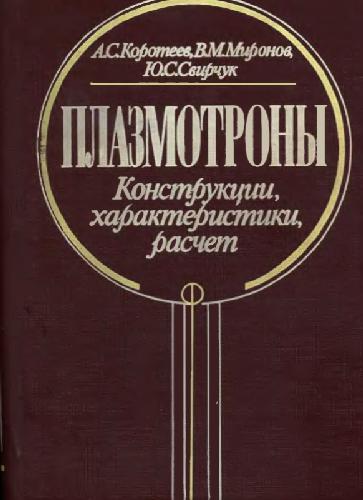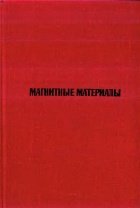Wolfgang Brandner, Hubert Klahr9780521860154, 0-521-86015-6
Table of contents :
Cover……Page 1
Half-title……Page 3
Series-title……Page 4
Title……Page 5
Copyright……Page 6
Dedication……Page 7
Contents……Page 9
Preface……Page 15
Acknowledgments……Page 17
1.2 Descartes and von Weizsäcker: vortices……Page 19
1.3 Magnetic effects……Page 20
1.4 Gravitational instability……Page 21
1.5 Core accretion: gas capture……Page 24
1.6 Planet searches……Page 26
2.1 Introduction……Page 32
2.1.1 The formation of planets: from protoplanetary towards debris disk systems……Page 34
2.1.2 The Spitzer Space Telescope and the formation and evolution of planetary systems legacy program……Page 35
2.2 From protoplanetary to debris disks: processing and dispersion of the inner dust disk……Page 38
2.3 Debris disks: Asteroid or Kuiper Belt?……Page 43
3.1 Introduction……Page 49
3.2 Photoevaporation and other dispersal mechanisms……Page 51
3.3 Photoevaporation by external radiation……Page 52
3.4 Photoevaporation by the central star……Page 54
3.5 Photoevaporation and dust evolution……Page 57
3.6 Conclusions……Page 58
Acknowledgments……Page 59
4.1.1 Protostellar collapse and formation of disks……Page 60
4.1.2 Observations of accretion in protoplanetary systems……Page 61
4.1.3 Self-gravity and the early evolution of disks……Page 62
4.1.4 Viscous evolution……Page 64
4.2 Magnetohydrodynamic turbulence……Page 65
4.2.1 Non-ideal magnetohydrodynamics……Page 66
4.2.4 Hall term……Page 68
4.3 Layered accretion……Page 69
4.3.1 Ionization structure……Page 70
4.3.2 Layered disk evolution……Page 73
4.4 Alternative instabilities in the dead zone……Page 74
4.5 Transport by turbulence……Page 75
4.5.1 Dust dynamics……Page 76
4.5.2 Dust-trapping mechanisms……Page 77
4.5.3 Turbulent diffusion……Page 79
4.6 Conclusions……Page 80
5.1 Introduction: geoscience meets astronomy……Page 82
5.2 Meteorites: remnants of planetesimal formation 4.6 billion years ago in the asteroid belt……Page 84
5.3 Calcium-aluminum-rich inclusions and chondrules: remnants from the earliest Solar System……Page 85
5.4.1 Metal abundance and oxidation state……Page 87
5.4.2 Ratio of refractory to volatile elements……Page 91
5.4.4 Oxygen isotopes……Page 92
5.5 Isotopic homogeneity of Solar-System materials……Page 93
5.5.1 Heterogeneity inherited from the interstellar medium: restricted to rare individual grains……Page 94
5.5.2 Heterogeneous or homogeneous distribution of short-lived nuclides: mixed evidence……Page 95
5.6 Dating accretion, heating, and cooling of planetesimals……Page 96
5.7 A timescale of early Solar-System events……Page 98
5.8 Formation of terrestrial planets……Page 101
5.9 Disk dissipation, Jupiter formation and gas–solid fractionation……Page 102
5.10 Summary……Page 104
Acknowledgments……Page 107
6.1 Introduction……Page 108
6.2.1 Hit-and-stick collisions……Page 109
6.2.1.3 Collisions between dust aggregates……Page 110
6.2.1.4 Brownian growth……Page 113
6.2.1.5 Differential sedimentation and turbulent growth……Page 115
6.2.2 Medium/high kinetic-energy collisions……Page 118
6.2.2.1 Aggregate–aggregate collision……Page 119
6.2.2.2 Collisions between larger dust aggregates……Page 120
6.2.2.3 Static measurements of high-energy impacts……Page 121
6.2.2.5 Ice collisions……Page 123
6.3 Dust aggregate collisions and electromagnetic forces……Page 124
6.4 Dust aggregate collisions and dust–gas interactions……Page 125
6.5 Future experiments……Page 126
6.6 Summary……Page 127
Acknowledgments……Page 129
7.1 Introduction……Page 130
7.2 Observational evidence for grain growth……Page 131
7.3 Radiative transfer analysis……Page 134
7.4.1 Important processes……Page 136
Brownian motion growth……Page 137
Settling and the formation of a dust sublayer……Page 138
Trapping……Page 139
Radial turbulent mixing and meridional flow……Page 140
Gravitational instability of the dust layer……Page 141
7.4.2 Global models of grain sedimentation and aggregation in protoplanetary disks……Page 142
7.5 Summary……Page 146
8.1 Introduction……Page 147
8.2.1 Oligarchic growth……Page 149
8.3 Possibilities for boosting accretion speed and efficiency……Page 154
8.3.1 The role of protoplanet atmospheres……Page 155
8.3.2 Accretion in the shear-dominated regime……Page 156
8.3.3 Local enhancement of solids……Page 158
8.4 Ice giants: the problem of Uranus and Neptune……Page 159
8.5 Migration and survival……Page 161
8.6 Discussion and conclusions……Page 162
9.1 Introduction……Page 165
9.2 Probability and frequency of transits……Page 167
9.3.1 Photometric transits……Page 169
9.4.1 β Pictoris……Page 171
9.4.3 OGLE planets……Page 172
9.4.5 Missing photometric transits……Page 173
9.4.6 The planet radius problem……Page 174
9.5.2 HD209458b……Page 175
9.5.3 Evaporation of hot Jupiters……Page 177
9.5.4 The search for transits with space observatories……Page 178
9.6 Conclusion……Page 179
Acknowledgments……Page 180
10.1 Introduction……Page 181
10.2 The development of the CAGC model……Page 183
10.3 Observational requirements for planet-forming models……Page 185
10.4 The CAGC computer model……Page 187
10.5 Recent results……Page 191
10.6 Summary……Page 195
Acknowledgments……Page 196
11.1 Overview of exoplanet properties and theory……Page 197
11.2 The Lick, Keck, and AAT planet searches……Page 198
11.3 Observed properties of exoplanets……Page 199
11.3.1 The planet-metallicity relationship……Page 201
11.4 The lowest-mass planets and multi-planet systems……Page 202
11.5 The Space Interferometry Mission……Page 203
11.5.2 Low-mass detection threshold of SIM……Page 204
11.6 The synergy of SIM and Terrestrial Planet Finder (TPF)/Darwin……Page 208
Acknowledgments……Page 209
12.1 Introduction……Page 210
12.2 Gas-giant planet census……Page 211
12.3 Metallicity correlation……Page 212
12.4 Low-metallicity stars……Page 214
12.5 Gas-giant planets orbiting M dwarfs……Page 215
12.6 Core masses of Jupiter and Saturn……Page 216
12.7 Super-Earths and failed cores……Page 217
12.8 Gas-giant planet formation epochs……Page 218
12.9 Planetary-system architectures……Page 219
12.10 Conclusions……Page 220
13.1 Recent improvements in radial velocity precision……Page 221
13.2 Detecting planets down to a few Earth masses……Page 223
13.3 New discoveries and implications for planet-formation theories……Page 226
13.4.1 Giant-planet occurrence……Page 228
13.4.2 Mass and period distributions……Page 229
13.4.3 Eccentricity distribution……Page 231
13.4.4 Metallicity of planet-host stars……Page 232
14.2 Type I migration……Page 234
14.2.1.1 Torque at Lindblad resonances……Page 235
14.2.1.2 Differential Lindblad torque……Page 236
14.2.1.4 Torque at a corotation resonance……Page 238
14.2.2 Corotation torque……Page 240
14.2.3 Type I migration-drift rate estimates……Page 241
14.3.1 Numerical modeling……Page 242
14.3.2 Viscous laminar disks……Page 243
14.3.3 The migration rate……Page 245
14.3.4 Inviscid disks……Page 246
14.4 Type III migration……Page 248
14.6 Eccentricity driving……Page 252
15.2 Masses……Page 254
15.4 The multiplicity of brown dwarfs……Page 257
15.4.1 Binary brown dwarfs……Page 258
15.5 Formation mechanisms……Page 259
15.5.1 Brown dwarfs from the collapse of low-mass molecular cores……Page 260
15.5.2 Brown dwarfs from the competition between accretion and ejection……Page 261
15.5.3 Brown dwarfs from evaporated cores……Page 264
15.6 Planet or brown dwarf?……Page 265
Acknowledgments……Page 267
16.1 Introduction: planet detection and studies in the historical context……Page 268
16.2 Observing methods and ground/space projects……Page 269
16.2.1.2 Flux modulation……Page 270
16.2.2.1 Differential imaging……Page 271
16.3 Outlook: planet mapping and bio-signatures……Page 272
17 Overview and prospective in theory and observation of planet formation……Page 274
References……Page 281
Index……Page 318







Reviews
There are no reviews yet.